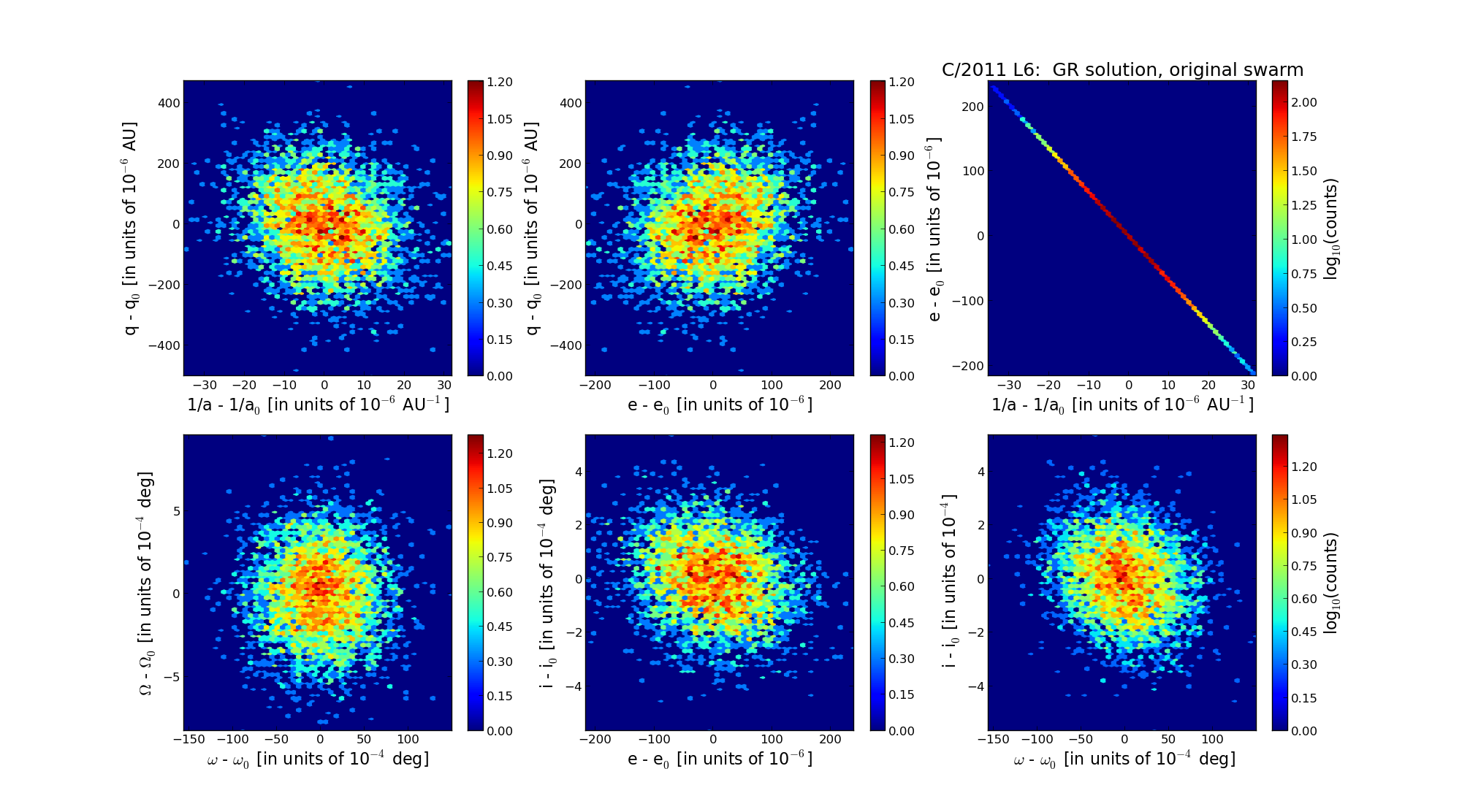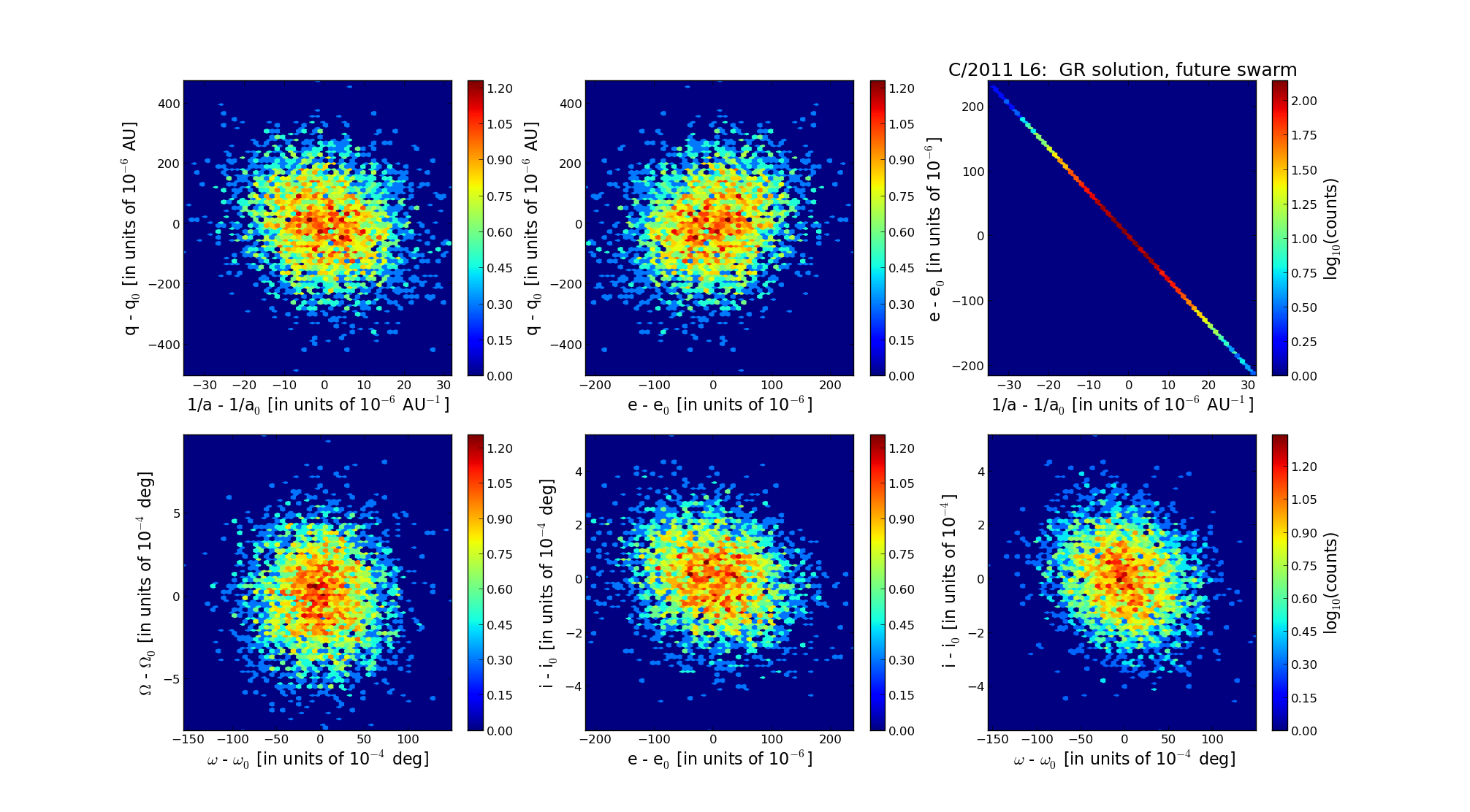| Solar System Dynamics & Planetology Group |
 |
C/2011 L6 Boattini |  |
| Solar System Dynamics & Planetology Group |
 |
C/2011 L6 Boattini |  |
| number of observations | 56 |
| number of residuals | 112 |
| data interval | 2011 May 28 — 2012 Apr. 24 |
| rms [arcsec] | 0.59 |
| orbit quality class | 1b |
| Epoch (TT) | 20110208.0 | = JD 2455600.5 |
| time of perihelion passage (TT) | 20110122.922674 | ± 0.046001 |
| perihelion distance | 6.78778738 | ± 0.00012531 |
| eccentricity | 1.00302592 | ± 0.00006883 |
| argument of perihelion [deg] | 331.611992 | ± 0.003903 |
| longitude of the ascending node [deg] | 214.483687 | ± 0.000242 |
| inclination [deg] | 171.455846 | ± 0.000132 |
| inverse semimajor axis [10-6 au-1] | -445.79 | ± 10.13 |

| Epoch (TT) | 17010812 | |
| time of perihelion passage (TT) | 20110121.346133 | ± 0.046342 |
| perihelion distance | 6.78832443 | ± 0.00012547 |
| eccentricity | 0.99927158 | ± 0.00006839 |
| argument of perihelion [deg] | 331.438066 | ± 0.003937 |
| longitude of the ascending node [deg] | 214.387264 | ± 0.000241 |
| inclination [deg] | 171.448835 | ± 0.000133 |
| inverse semimajor axis [10-6 au-1] | 107.30 | ± 10.07 |

| Epoch (TT) | 23190813 | |
| time of perihelion passage (TT) | 20110120.023065 | ± 0.046173 |
| perihelion distance | 6.78663579 | ± 0.00012631 |
| eccentricity | 0.99979940 | ± 0.00006842 |
| argument of perihelion [deg] | 331.465527 | ± 0.003934 |
| longitude of the ascending node [deg] | 214.505370 | ± 0.000241 |
| inclination [deg] | 171.448082 | ± 0.000133 |
| inverse semimajor axis [10-6 au-1] | 29.56 | ± 10.08 |